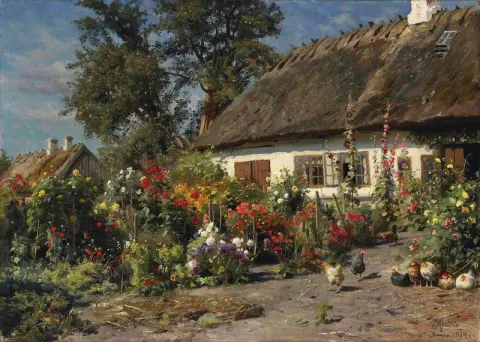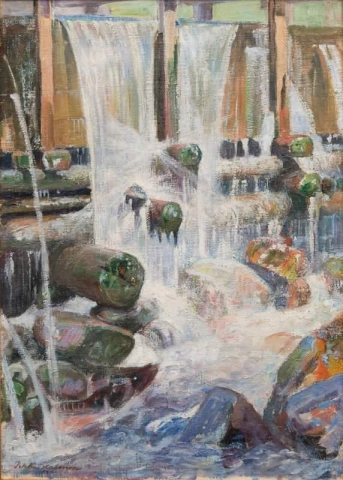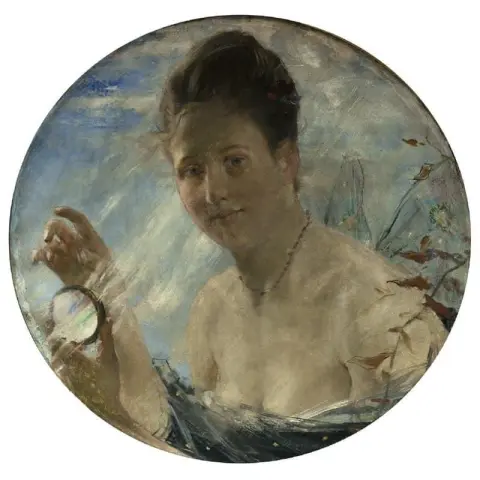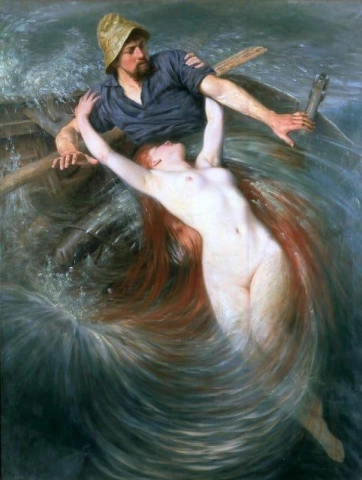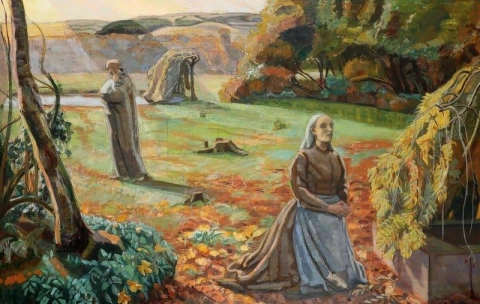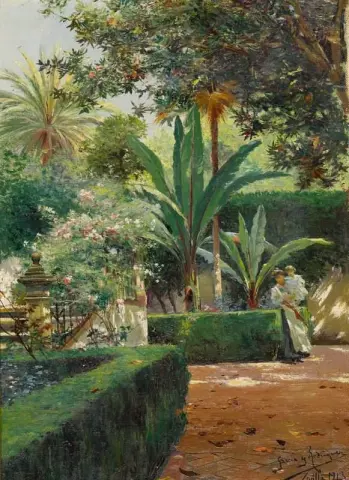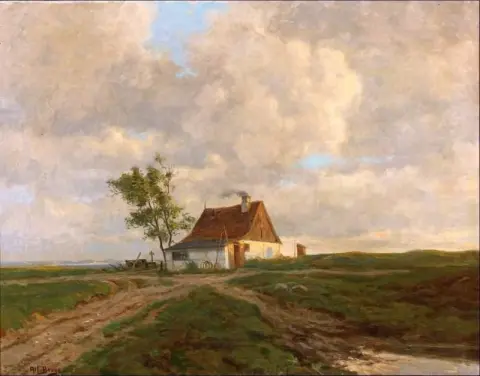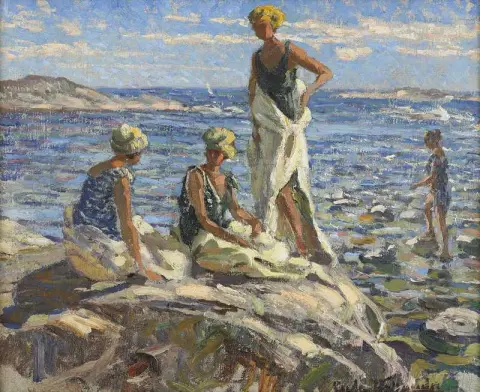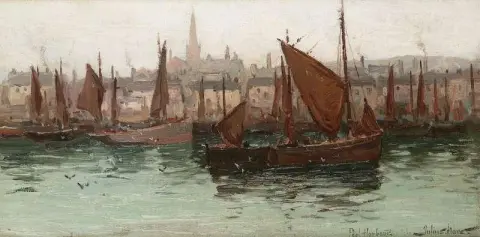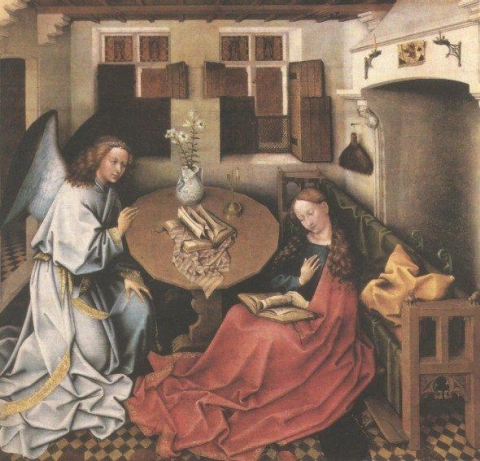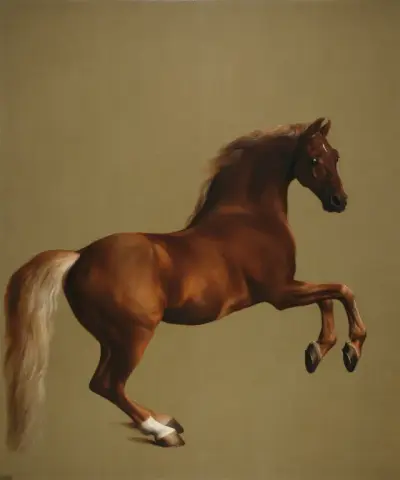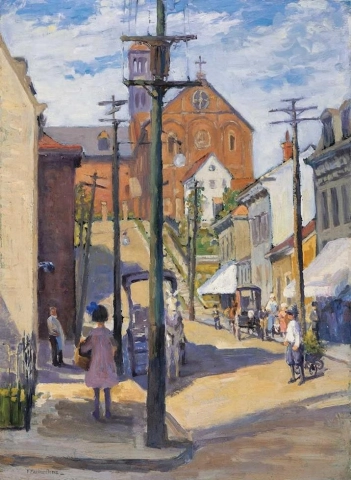Hand-painted painting reproductions - Movements - Naturalism
Imagine owning a museum-worthy piece of art, created by the greatest artists in history and reproduced by passionate and experienced painters. At POD, we offer you the opportunity to make that dream a reality. We reproduce the works of art of your favorite painters from the Naturalism art movement in the smallest details, so that you can enjoy them in your own home.
Our reproductions are made by experienced artists who use the best materials and techniques. We are committed to providing you with works of art of the highest quality, which will bring joy and inspiration to your family for generations to come.
Naturalism: A Celebration of the Natural World
Nature Art, also known as Naturalism, is an artistic approach that focuses on the faithful representation of the natural world. Emerging in the 19th century, this movement sought to portray life as it is, without idealization or exaggeration. Its roots lie in the observation of the natural environment, and its evolution has had a profound influence on various art forms, from landscape paintings to wildlife depictions. Naturalism aims to capture the beauty and authenticity of the world around us, often drawing from real-life observation and scientific advancements to create lifelike representations of nature’s forms.
Early Development and Influences
The tradition of nature depiction can be traced back to ancient civilizations, where the representation of animals, plants, and landscapes appeared in the art of Egypt, Greece, and Rome. However, it was during the Renaissance that a more detailed and scientifically accurate approach to nature began to emerge, fueled by advances in anatomy, botany, and the study of the natural world.
The roots of Naturalism, however, can primarily be found in the 17th century, with artists like Jan van Goyen and Aelbert Cuyp, who focused on landscape painting, capturing natural scenes with incredible precision and attention to detail. They pioneered a style that emphasized realism and depth, while subtly conveying the beauty of the natural environment.
In the 19th century, the rise of Naturalism coincided with the broader movement of Realism. This period marked a shift away from romanticized depictions of nature and humanity, and instead, artists like Gustave Courbet and Jean-Baptiste-Camille Corot began focusing on direct observation of nature. This shift was largely influenced by the development of photography, which allowed artists to study light, composition, and color more closely, helping them refine their depictions of the world around them.
Characteristics and Style
The key characteristic of Nature Art (Naturalism) is its commitment to realistic representation. Unlike idealized depictions of nature, Naturalism aims to capture the world as it truly is, paying attention to the smallest details. This includes the accurate portrayal of light, shadow, texture, and form. Artists in this genre strive for precision, often studying their subjects meticulously to produce lifelike depictions.
In Naturalism, the representation of nature is typically devoid of fantasy or imaginative interpretation. Whether depicting a forest, a garden, or a wild animal, the emphasis is on capturing the essence of the subject through scientific observation. The use of perspective, accurate anatomy, and attention to natural light are common techniques in this style, as artists sought to replicate nature’s beauty with exactitude.
In landscape painting, the natural world is often shown in its full glory, whether it is a sweeping vista or a quiet rural scene. In portraiture and figure painting, Naturalism also focuses on the real, often including everyday people with attention to the imperfections and nuances of their appearance. This rejection of idealization was a key distinction from earlier movements like the Romanticism or Neoclassicism, which tended to elevate the human form to perfection.
In terms of color, Naturalism often favors earth tones, greens, browns, and other hues that reflect the natural world. The goal is to use color to create a sense of realism, rather than for symbolic or expressive purposes. Light is also a significant feature in Naturalistic art, with artists paying great attention to how light falls on objects in the natural world.
Key Themes and Significance
Nature Art (Naturalism) is deeply connected to the theme of realism, which seeks to depict the world as it exists. The primary goal of Naturalism is to present nature truthfully and to challenge artistic traditions that idealize or distort the natural world.
One of the central themes of Naturalism is the observation of nature. Artists who embraced this style sought to capture the beauty of nature through direct observation, often working outdoors (plein air) to better understand how light, weather, and other environmental factors affected their subjects. The movement is also associated with a growing interest in scientific discovery, as artists like John James Audubon studied animals and plants in great detail to depict them accurately.
In the 19th century, Naturalism also became intertwined with the social and political climate of the time. Realist artists focused on portraying working-class people and the rural poor, shedding light on societal issues in a way that earlier movements, like Romanticism, had not. In this sense, Nature Art was not only about depicting nature, but also about confronting the viewer with the realities of the world around them, whether that be the splendor of a landscape or the hard lives of everyday people.
Naturalism also emphasized the importance of the natural world as a source of inspiration and knowledge. By carefully observing the environment, artists believed they could better understand life and nature. This idea was in line with the growing influence of scientific principles in the 19th century, especially in fields such as biology, geology, and botany.
Achievements and Influence
The Naturalist approach to art had a profound influence on the development of realism in the 19th century. One of the most influential figures in this movement was the French artist Jean-Baptiste-Camille Corot, who became famous for his landscape paintings that captured the natural world with stunning precision. His works inspired generations of landscape painters and helped establish the practice of working outdoors to capture the true essence of nature.
In the United States, artists like John James Audubon and Thomas Cole further developed the tradition of nature painting. Audubon’s detailed illustrations of birds and other wildlife were groundbreaking, as they offered unprecedented accuracy in depicting the animals he studied. His work not only contributed to the field of art but also to the scientific understanding of natural history.
The influence of Naturalism extended beyond painting into other fields such as literature, where writers like Emile Zola and Guy de Maupassant embraced similar principles of realistic portrayal in their novels. The connection between art and science also continued to grow, with many artists becoming deeply involved in the study of natural science and using their observations to inform their work.
In the 20th century, Nature Art influenced the development of various other movements, such as American Regionalism and even contemporary environmental art. Artists in these movements often focused on landscapes, rural life, and the relationship between humans and the natural world.
Legacy and Modern Impact
Nature Art (Naturalism) continues to influence contemporary art. Many modern artists, particularly those working in hyperrealism or photorealism, trace their roots back to Naturalist principles. By focusing on detailed, life-like representations of nature, these artists continue the tradition of observing and recording the natural world with precision.
Today, Naturalism is not only seen in fine art but also in environmental art, where artists seek to engage with the natural world in ways that encourage awareness of ecological issues. The idea of portraying nature with care and accuracy has remained a constant theme in art, reflecting a collective desire to better understand and appreciate the world around us.
Where to Find Reproductions of Nature Art (Naturalism)
For those interested in bringing the beauty and detail of Naturalism into their homes, high-quality oil painting reproductions are available through Painting On Demand (POD). These reproductions offer an authentic experience of the natural world, capturing the meticulous detail of both landscapes and wildlife, and honoring the tradition of accurate and truthful depictions.

